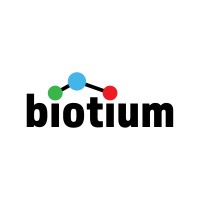BRCA1 Monoclonal / CF405S / BRCA1/1398
Product Details
| Description | BRCA1 Monoclonal Mouse Antibody (BRCA1/1398) | |
|---|---|---|
| Conjugate | CF405S | |
| Clone | BRCA1/1398 | |
| Target Species | Human | |
| Applications | FC, IF, IHC-P | |
| Supplier | Biotium | |
| Catalog # | Sign in to view product details, citations, and spectra | |
| Size | ||
| Price | ||
| Antigen | ||
| Host | ||
| Isotype |
About BRCA1
This gene encodes a 190 kD nuclear phosphoprotein that plays a role in maintaining genomic stability, and it also acts as a tumor suppressor. The BRCA1 gene contains 22 exons spanning about 110 kb of DNA. The encoded protein combines with other tumor suppressors, DNA damage sensors, and signal transducers to form a large multi-subunit protein complex known as the BRCA1-associated genome surveillance complex (BASC). This gene product associates with RNA polymerase II, and through the C-terminal domain, also interacts with histone deacetylase complexes. This protein thus plays a role in transcription, DNA repair of double-stranded breaks, and recombination. Mutations in this gene are responsible for approximately 40% of inherited breast cancers and more than 80% of inherited breast and ovarian cancers. Alternative splicing plays a role in modulating the subcellular localization and physiological function of this gene. Many alternatively spliced transcript variants, some of which are disease-associated mutations, have been described for this gene, but the full-length natures of only some of these variants has been described. A related pseudogene, which is also located on chromosome 17, has been identified. [provided by RefSeq, May 2020]
This gene encodes a 190 kD nuclear phosphoprotein that plays a role in maintaining genomic stability, and it also acts as a tumor suppressor. The BRCA1 gene contains 22 exons spanning about 110 kb of DNA. The encoded protein combines with other tumor suppressors, DNA damage sensors, and signal transducers to form a large multi-subunit protein complex known as the BRCA1-associated genome surveillance complex (BASC). This gene product associates with RNA polymerase II, and through the C-terminal domain, also interacts with histone deacetylase complexes. This protein thus plays a role in transcription, DNA repair of double-stranded breaks, and recombination. Mutations in this gene are responsible for approximately 40% of inherited breast cancers and more than 80% of inherited breast and ovarian cancers. Alternative splicing plays a role in modulating the subcellular localization and physiological function of this gene. Many alternatively spliced transcript variants, some of which are disease-associated mutations, have been described for this gene, but the full-length natures of only some of these variants has been described. A related pseudogene, which is also located on chromosome 17, has been identified. [provided by RefSeq, May 2020]
About CF405S
CF®405S from Biotium is a fluorophore with an excitation peak at 404 nm and an emission peak at 431 nm. It is spectrally similar to Alexa Fluor™ 405. It can be use in fluorescence microscopy, specifically its been validated in Structured Illumination (SIM), and flow cytometry. However, in flow cytometry, superior alternatives are Brilliant™ Violet 421, SuperNova v428 and StarBright Violet 440.
CF®405S from Biotium is a fluorophore with an excitation peak at 404 nm and an emission peak at 431 nm. It is spectrally similar to Alexa Fluor™ 405. It can be use in fluorescence microscopy, specifically its been validated in Structured Illumination (SIM), and flow cytometry. However, in flow cytometry, superior alternatives are Brilliant™ Violet 421, SuperNova v428 and StarBright Violet 440.
Experiment Design Tools
Panel Builders
Looking to design a Microscopy or Flow Cytometry experiment?
Validation References
Reviews & Ratings
| Reviews |
|---|
Looking for more options?
824 BRCA1 antibodies from over 25 suppliers available with over 52 conjugates.





